"Today I am going to congratulate you on the arrival of the New Year and to inform you that I have received your portrait. I wish you pleasant new acquaintances in the New Year,” reads a greeting on a card from December 30, 1905. The image depicts young men in traditional Bavarian clothing and the card is part of the rich collection of the Gorna Oryahovitsa Historical Museum. It boasts more than 4,000 post cards, some of them dedicated to Easter and of course, the Christmas and New Year festive season.
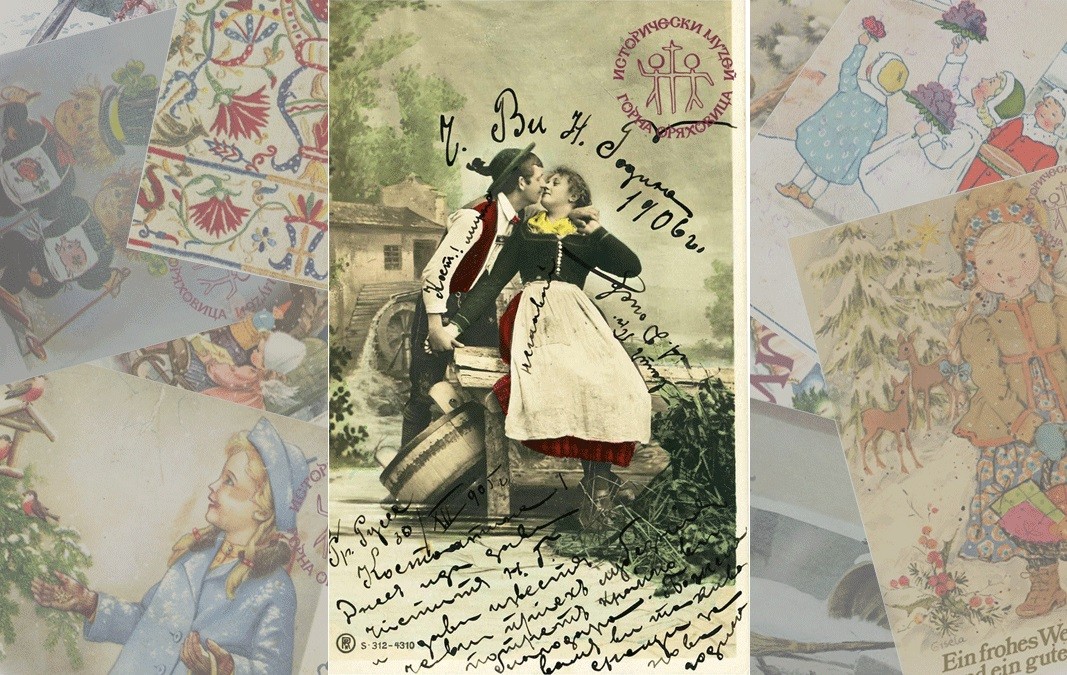
“The cards carry the messages of their senders in Russian, Bulgarian, French, and German. Today thanks to them we know about people’s anxieties, hopes and dreams,” says Temenuga Yordanova from the museum. “Along with classic religious topics, the holiday cards of the early 20th century include photos of beautiful girls, smiling chimney sweepers, winter landscapes, families gathered in front of the Christmas tree, as well as fairy-tale characters carrying gifts. There are those that speak for themselves about their time, such as a card with children in a prayer pose and a sword standing under the tree instead of a gift. The date is December 24, 1907, the year of the Balkan War", she says.
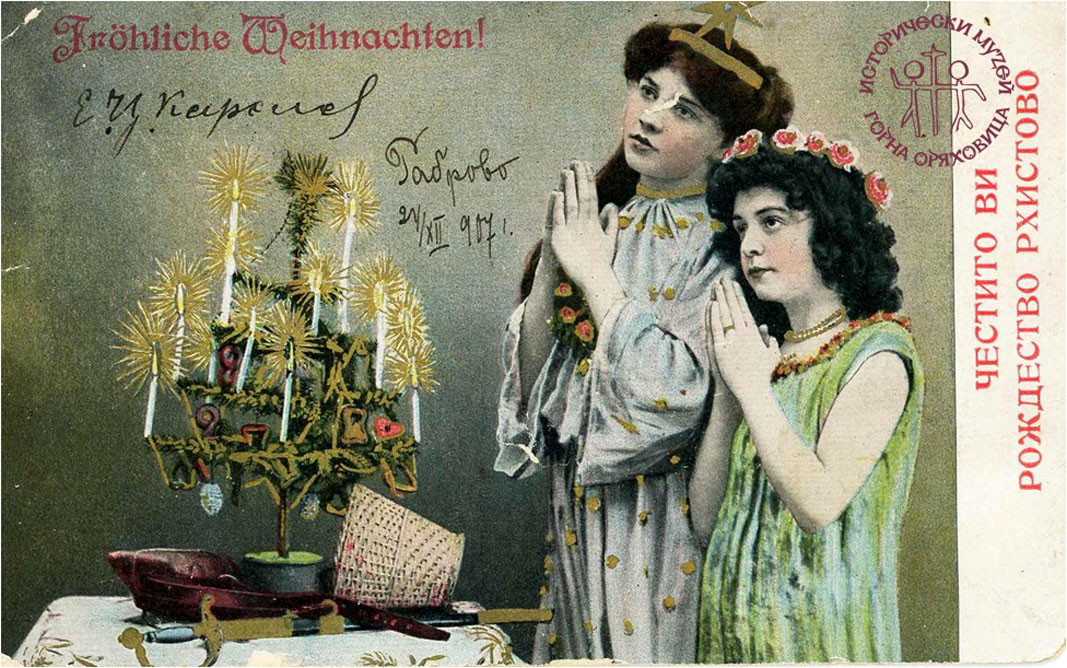
One of Temenuga Yordanova's favorite cards shows children playing in the snow, dressed in colourful clothes and throwing bread crumbs at the birds.

In Bulgaria, sending Christmas cards became a fashion almost simultaneously with the rest of Europe – in the late 19th and early 20th century. But they were known even during the times of the Ottoman Empire in the cities of Ruse, Vidin and Lom on the Danube, where they arrived by mail from Vienna. The former were black and white and subsequently people started colouring them.
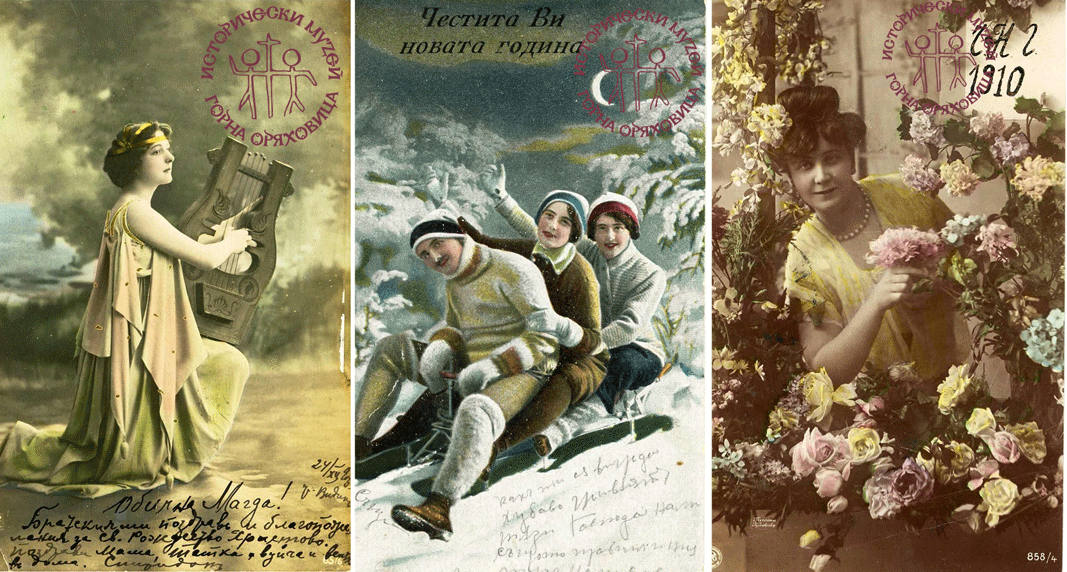
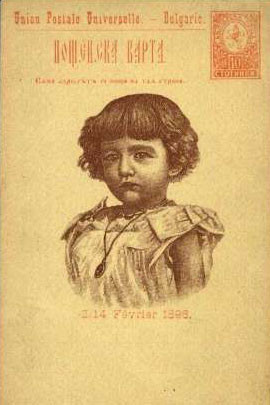 The family of Knyaz Ferdinand of Saxe-Coburg-Gotha is responsible for the first illustrated card in the Principality of Bulgaria. This happened back in 1896 on the occasion of baptizing the heir to the throne in the Orthodox faith. From the message written on its back it becomes clear that this was a Christmas card.
The family of Knyaz Ferdinand of Saxe-Coburg-Gotha is responsible for the first illustrated card in the Principality of Bulgaria. This happened back in 1896 on the occasion of baptizing the heir to the throne in the Orthodox faith. From the message written on its back it becomes clear that this was a Christmas card.
“It depicts the young Boris. It is not kept in the museum in Gorna Oryahovitsa, but it is valuable for Bulgaria. After 1898 the card with the image of Boris started to be issued almost every year and people accept it as a Christmas card,” Temenuga Yordanova explains. “Ferdinand also started a family collection of greeting cards, enriched after his abdication by Tsar Boris III and later by Simeon II. A collection of three generations, it is one of the richest in the world and has won many international awards. It is still maintained by former Prime Minister Simeon Saxe-Coburg-Gotha.”
 The Historical Museum in Gorna Oryahovitsa keeps 1,589 Christmas cards. They are different and have a multifaceted interpretation depending on the period in which they were sent. Which are the most unusual and interesting ones?
The Historical Museum in Gorna Oryahovitsa keeps 1,589 Christmas cards. They are different and have a multifaceted interpretation depending on the period in which they were sent. Which are the most unusual and interesting ones?
“We can divide them into several categories,” Mrs. Yordanova replies. “The first one contains the oldest Christmas message, dated January 2, 1903, depicting a boat at sea. The second category includes one of the most valuable cards – one with the image of young Boris III in a military uniform from 1912. In the third category we can include the oldest with images of children pulling a sled and a New Year's message from 1917.”

Mass mailing of postcards started in Bulgaria after the Second World War. Among the images the most outstanding are those of factories and cooperative farms and among the wishes one sees some for peace and socialism. There are postcards with New Year's greetings from 1906 to 1922, which look unusual at first glance as they show a walk in the woods, a statue of a mother with children, Napoleon and a military greeting. But no matter how the greeting is presented, all of the greetings for the holidays are sincere.

The totalitarian regime in Bulgaria pushed the idea of Santa Claus and Christmas out of the minds of the youth and replaced it with the character of Dyado Mraz (Grandpa Frost) and atheism. It was not until 1976 that the Bulgarian Post issued the first greeting card with the image of Dyado Mraz.
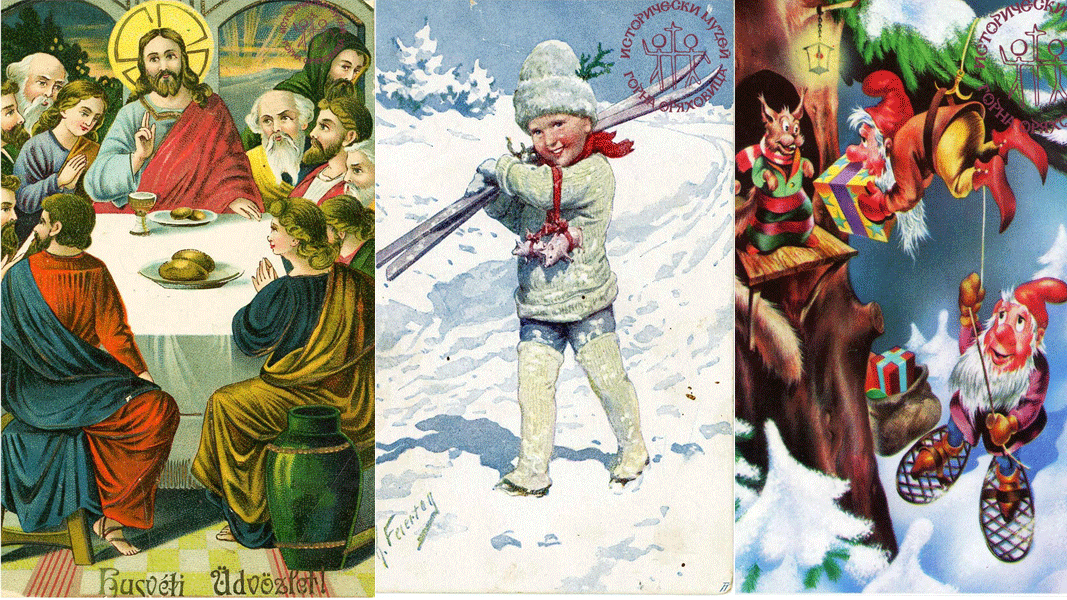
“More and more digital cards are being sent these days and we can say this way the past manages to meet the future and greeting cards continue to touch people’s hearts and remind them to be good not only on holidays. I want to wish Radio Bulgaria's listeners to open a new page in their lives, with messages of health, happiness and grace to them and their families. Don't let the hectic daily routine kill traditions!” Temenuga Yordanova said in conclusion.
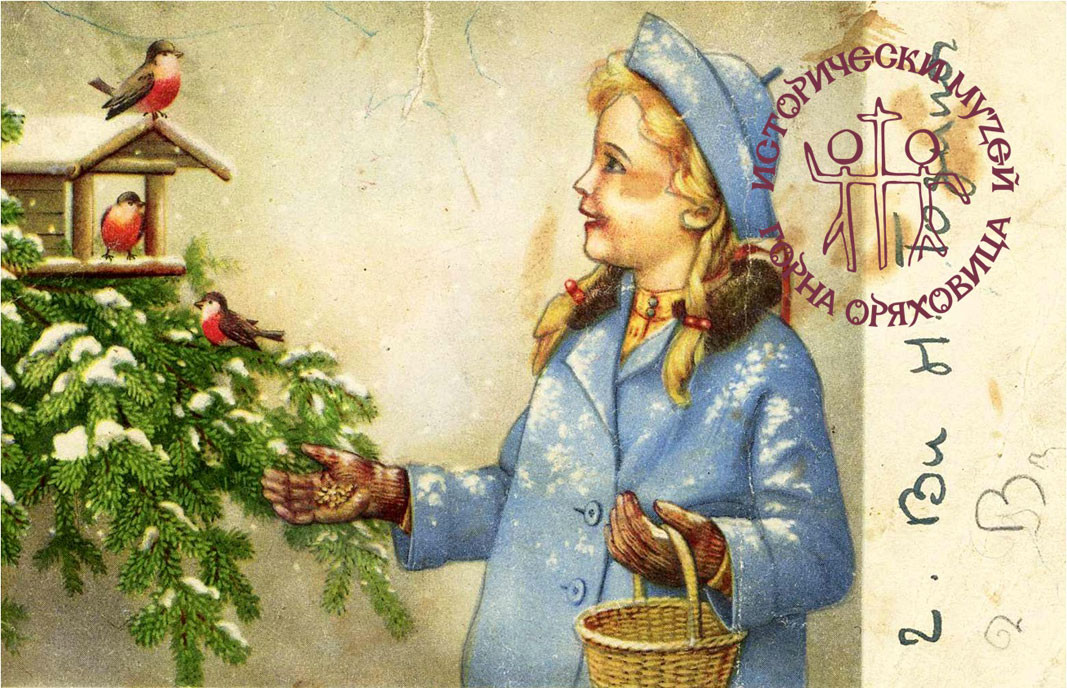
Photos provided by the Gorna Oryahovitsa Historical Museum
English: Alexander Markov
Teodora Byalkova joined the Bulgarian Sunday school "Sts. Cyril and Methodius" in Athens in the 2022/23 school year. At that time, she also organized the dance formation "Ludi-Mladi" for current and graduated students. Since then, the..
The village of Novo Selo is located on the road between Veliko Tarnovo and Sevlievo. Here archaeologists have found tools used by people during the Chalcolithic, which testify to an active economic life in the area. There is also..
The mountain resort of Bansko is set to become the capital of mountaineering culture, adventure, and travel, featuring films, exhibitions, and presentations that detail the limits of human possibility. From November 19 to 23, the "Bansko Film..
The Bulgarian Embassy hosted the second concert of the 17th season of the Bulgarian Music Society in Washington. On 14 November, guests enjoyed a unique..
Teodora Byalkova joined the Bulgarian Sunday school "Sts. Cyril and Methodius" in Athens in the 2022/23 school year. At that time, she..
The village of Novo Selo is located on the road between Veliko Tarnovo and Sevlievo. Here archaeologists have found tools used by..

+359 2 9336 661
